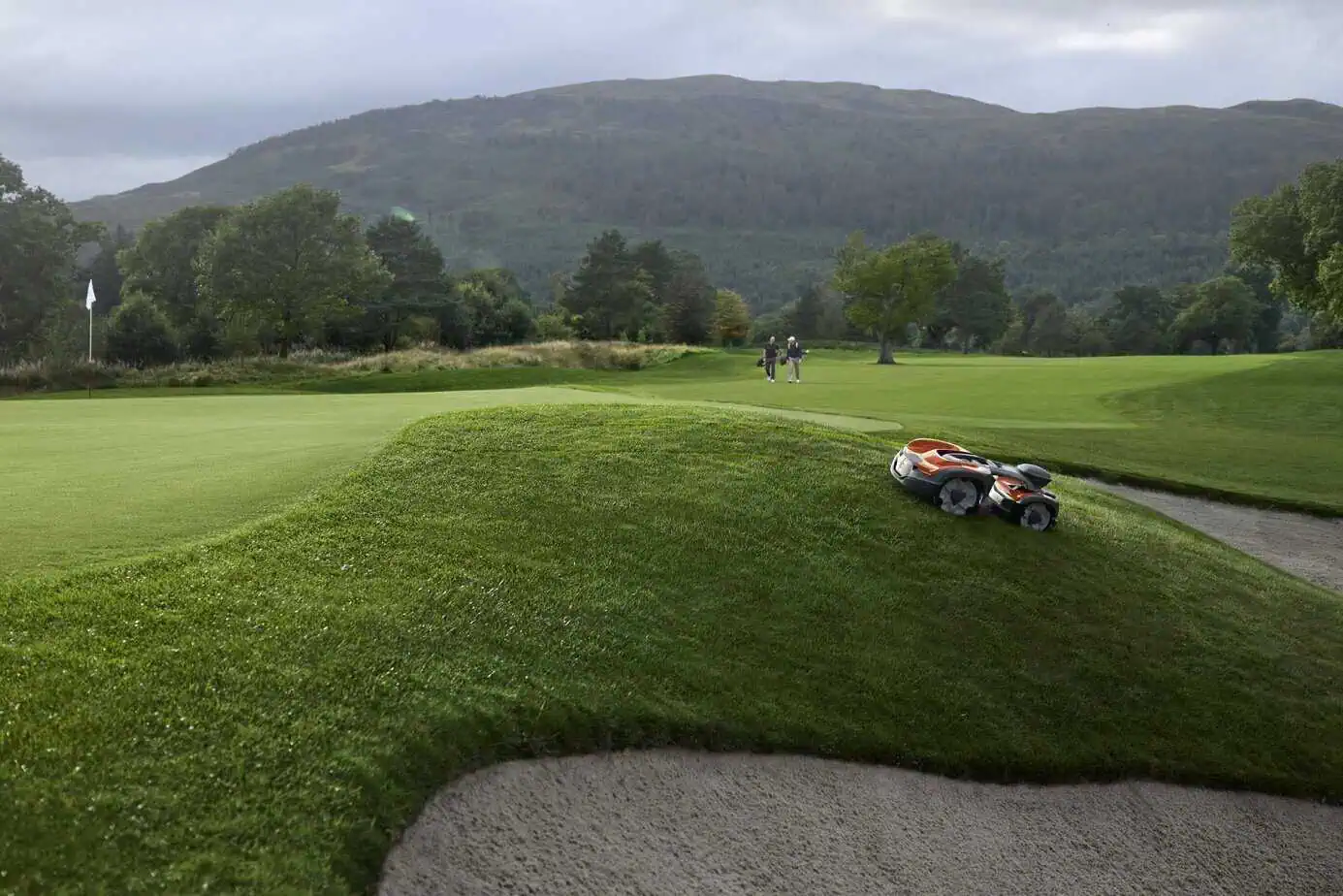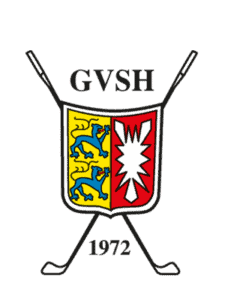Uncertainty, skepticism or pure enthusiasm – the small robotic mowers that have primarily been mowing fairways and roughs on golf courses in Europe for around ten years are met with many different emotions. Now renowned scientists have once again examined the mowing performance of the devices. “The result was very positive. Above all, the quality of the grass was better,” says Trygve S. Aamlid from the Norwegian Institute of Bioeconomy, who led the ROBO-GOLF project. “This is due to the daily cutting, which leads to better grass and fewer weeds on the fairways.” According to the professor in an interview with the Scandinavian Turfgrass Environmental Research Foundation, which funded the project alongside the Husqvarna Group, he himself was quite skeptical.
The reaction of golfers on the courses with test devices was also almost exclusively positive. In a survey in which mainly club members with extensive playing experience were asked about their attitude to the robots, less than ten percent expressed any reservations at all, with the greatest objection being the risk of injury to animals. This argument is currently proving to be one of the biggest obstacles to the purchase of robotic mowers, as injury to small animals is particularly relevant at night, when golf courses could allow the robots to mow through. However, the manufacturer Husqvarna at least points out that the robotic mowers will be able to recognize and avoid small animals using AI from 2026. Behind closed doors, however, greenkeepers admit that not every toad or small snake on the fairway can be recognized, avoided or transported away even in existing operation on large machines. This issue therefore remains a sensitive detail.
.
In general, however, the players on the golf courses within the NIBIO study also had the impression that the playing surfaces were more even and dense, the ball lay better and there was no grass cutting. The lack of noise and no waiting times due to greenkeepers were also noted positively.
Among the manufacturers of the small autonomous mowers themselves, the mood is accordingly upbeat. “The industry has realized that there is a solution to its problems,” said Yvette Henshall-Bell, European President of the Husqvarna Group’s forest and garden division, in a recent interview with Golf Sustainable. “In recent years we have had to push the issue, now it is in demand. The mowers are no longer seen as crazy stuff. Everything is coming together.”
The Husqvarna Group from Sweden, which also has its largest market there, is now represented on over 130 golf courses in Germany alone. The fairways on around 30 percent of the courses are mowed using the robots alone, with the 580L Epos, 535 AWD Epos and CEORA 546 EPOS models being the most popular.
In the meantime, however, other manufacturers have also discovered the field for themselves. While Toro only presented one model at the world’s largest trade fair for lawns, GCSAA in San Diego in 2025, the Chinese manufacturer Kress in particular is gaining ground, having launched its first robots in Germany in 2023, but is now already in use on around 60 sites. Here, the KR237 E has now replaced the KR236 E as the top model.
All manufacturers of small robotic mowers have long since set their sights on the really big markets: With thousands of golf courses, the USA, Great Britain and Ireland are regarded as highly attractive sales markets, after the small devices that did not come from the established top dogs in the market – Toro, John Deere or Jacobsen – were met with great skepticism for a long time.
.
In the meantime, the picture has changed. Anyone coming to Royal Portrush in Northern Ireland, for example, where The Open took place this year, will encounter a Kress mower at one point or another. At the AIG Women’s Open in Royal Portcrawl, Husqvarna mowers were used exclusively on the fairways and practice areas for the first time. “The R&A’s agronomy team around the world is focused on creating high-performance surfaces in a sustainable way,” said Richard Windows, Deputy Director of Sustainable Agronomy at tournament organizer R&A, explaining the move. “At the AIG Women’s Open, the Husqvarna portfolio will help us achieve this goal through improved resource management, regular light mowing and reduced CO2 consumption.”
.
According to those who have relied on the robots of one of the companies for years, the low weight of the mowers is particularly interesting, as it ensures that the machines do not leave any damage or tracks, especially on wet surfaces. Added to this is the fact that the machines cannot cause any traces of oil in the event of unforeseen leaks.
As part of the NIBIO study, the greenkeepers of the courses involved also stated that the first year in particular after the installation of the devices was a real learning process, because the electricity on the golf course had to be secured, the maintenance of the devices had to be learned and the frequent changing of the small blades was essential for a good mowing result. In the end, many clubs realized that it made sense to appoint at least one person responsible for the robotic mowers in the greenkeeping team.
The issue is far from over: the answer to the question of the extent to which robots save resources, especially if they are powered by renewable energies that may be generated in the golf club itself, is changing with the ongoing development of the energy supply of golf clubs. This is also linked to the profitability calculation, which depends not only on the purchase price of the robots, but also on the price of diesel.
Anyone who believes that the golf market is the number one industry for manufacturers such as Husqvarna or Kress is mistaken. England may have around 2,400 golf courses, but it always has 30,000 soccer pitches. And in this segment, too, the little helpers have long since arrived in the top league. At Liverpool FC, the robots are stoically doing their rounds.
Subscribe to our newsletter!







 Foto: Al Zorah Golf Club
Foto: Al Zorah Golf Club